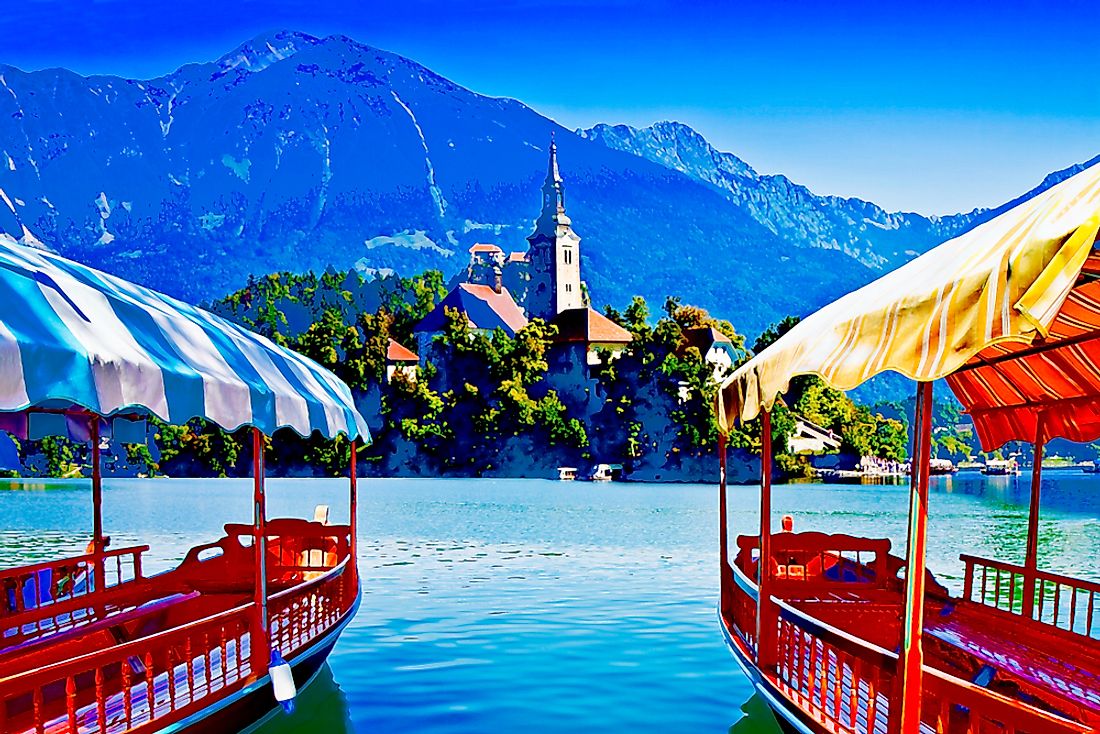The Culture Of Slovenia

The southern Central European nation of Slovenia is located at the crossroads of many cultures. It has thus developed a rich and unique culture of its own that reflects influences of the cultures of both its neighbors and faraway lands. Slovenia hosts a population of 2,102,126 individuals. The country has a generally homogeneous ethnic composition with 83.1% of the population representing ethnic Slovenes. The ethnic minorities living in the country include Serbs, Croats, Bosniaks, and others. Christianity is the religion of the majority in Slovenia with 57.8% of the population being Catholic Christians. Adherents of other Christian denominations, Muslims, and other religions constitute the rest of the population.
5. Slovenian Cuisine
The cuisine of the country is diverse and influenced by its climate, landscapes, rich history, and neighboring cuisines. The country can be divided into 23 gastronomic regions, each with its own set of cuisines. The first cookbook in the Slovene language was published as far back as 1798 by Valentin Vodnik.
Traditionally, porridges and stews were common but now the Slovenian cuisine includes about 100 varieties of soups. Some examples include aleluja (a soup made from turnip peels), beef soup with noodles, creamy mushroom soup, etc. Poultry and pork are favored animal food products. Other varieties of meat like goat and lamb are also consumed. A salad made from potato and dandelion is a much-loved dish in Slovenia. The use of honey, mushrooms, hazelnuts, walnuts, a variety of berries, etc., are common in Slovenian cuisine.
4. Literature and Graphic Arts in Slovenia
Slovenia has a long and rich literary tradition. The earliest written texts from Slovenia date back to the 10th century. The first book in the Slovene language was published in 1550. The Bible was translated into the language in 1584. However, most of the written literature from Slovenia until the 18th century were in German or Latin. During the Second World War, the horrors of the war and socialist realism influenced the literature of the country. Today, the Slovenian writers use various literary styles like existentialism and symbolism to present their work.
The art scene of Slovenia is as diverse as its cuisine and literature and ranges from Gothic frescoes to contemporary and abstract art. Today, Slovenia has a vibrant art community and a rich folk art tradition. Art exhibitions in the country were held as far back as the late 19th century. The first such exhibition was organized by a female painter named Ivana Kobilica of the realistic tradition. The Museum of Modern Art and the National Gallery of Slovenia exhibit the artwork by visual artists of the highest repute from the past and the present.
3. Performing Arts in Slovenia
Slovenian culture supports and promotes folk music and dances. The Institute of Music and National Manuscripts, located in the capital city of Ljubljana, preserves manuscripts and recordings of the traditional fables and songs. Ballet is a popular dance form practiced by the people and ballet schools are common throughout the country. The first such school was opened in 1918. Folk music and dance performances are common during traditional festivals and ceremonies. Western music and dance are popular among youth in urban areas.
2. Sport in Slovenia
Slovenians play a wide variety of games. The most popular team sports played in the country include association football, handball, basketball, and ice hockey. Individual sports of Slovenia include cycling, tennis, athletics, skiing, etc. Slovenian sportsmen have actively participated in multiple Summer and Winter Olympic Games. The country has achieved 19 medals at six Summer Olympics and 15 medals at seven Winter Olympics.
1. Life in a Slovenian Society
Although the traditional Slovenian society is patriarchal in nature, women in the country were granted full civil and political rights in independent Slovenia. Currently, a large section of the workforce comprises of women. The primary economic sectors with a large female participation are education, social welfare, hospitality, administration, and public services. Despite the law of Slovenia ensuring equal rights and freedoms to men and women, gender-related issues still persist in the Slovenian society. Women complain about exploitation at home and in the workplace. In traditional households, women are still expected to do all the housework even if they work full-time outside the home.
Slovenian society, especially in rural areas, tends to be oriented around the extended family. The parents of a couple play an important rule in deciding their marriage. The average age of marriage is generally lower than that in the countries of Western Europe. Marriage is considered an important part of the life of an individual. Cultural and religious influences work to make a marriage last. Divorce rates are thus not too high in the country. While nuclear or small extended families are more common in urban areas, large, extended families are the norm in the countryside.











